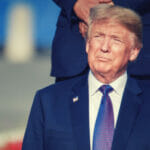American Foreign Policy: Wilsonians, Jeffersonians, Jacksonians And Today
We are currently experiencing one of the most contentious primary election seasons in at least 35 years. Candidates have made numerous incendiary statements about foreign policy that offer insights into their thinking. However, without a paradigm, it can be difficult for investors to determine what foreign policy decisions a candidate is likely to make. By using these archetypes of American foreign policy, one can more easily anticipate how a candidate today might act if they were to occupy the Oval Office. For this reason, I decided that our readers would benefit from a “refresh” of this study.
In 2012, we published a report titled “The Archetypes of American Foreign Policy.” In that article, I borrowed heavily from Walter Russell Meade in his 2002 book, Special Providence. Meade took a unique approach in describing policy positions, using historical figures instead of abstract models. Other policy analysts have used terms like “realists” or “idealists.” Unfortunately, these broad generalizations fail to fully express the subtleties of American foreign policy.
Meade named four archetypes: Hamiltonian, Wilsonian, Jeffersonian and Jacksonian. Each one of these archetypes has specific characteristics that describe the viewpoints and behavior of a policymaker of that certain type.
Meade does admit that other archetypes have existed throughout American history. For example, the Davisonian was an archetype named after the President of the Confederate States of America. Its goal was the preservation and expansion of slavery, and Davisonian foreign policy would be designed to support that institution. Of course, this archetype ceased to exist after the South lost the Civil War. By using a real historical figure as a representative of that archetype, it helps the reader to envision the position of that particular “school.” As with all archetypes, these are considered model specimens for that particular type. In real life, even these historical figures probably don’t fully capture the image that Meade projects for each type. Actual policymakers tend to be a mix of these four types; rarely will a policymaker be of pure form. However, the archetypes do offer a construct for an analyst to examine and predict the foreign policy behavior of elected officials.
American Foreign Policy
Full article in PDF










